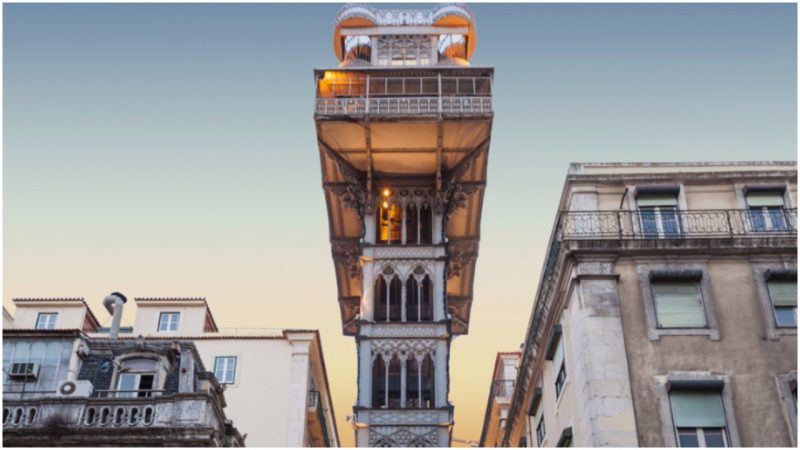In the last decade, Lisbon has become one of the most popular cities in Europe. It takes only one visit to this European gem to understand why: pleasant climate, delicious food and wine, enjoyable music evenings, and a myriad of sights.
Moreover, this so-called City of Seven Hills offers spectacular panoramic views over its picturesque architectural structures. Lisbon’s seven hills have had a crucial influence on the urbanization and intra-city transportation systems.
The viewpoints, or miradouros in Portuguese, can be found in lots of places around Lisbon, however, there is one popular tourist hotspot which takes visitors to a unique belvedere–the ornate elevator Santa Justa or Elevador de Santa Justa (Port.)
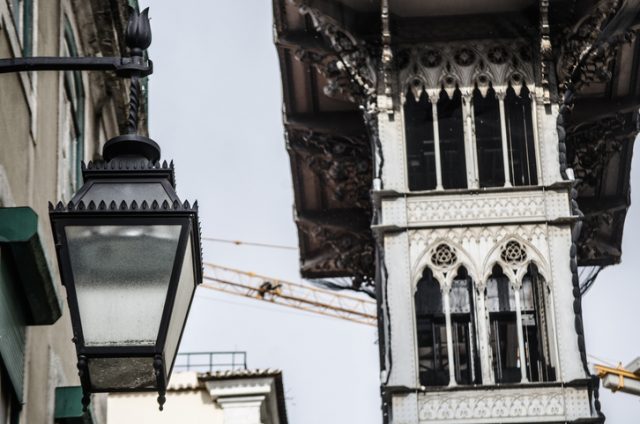
In Lisbon, there are four historic elevators that are national monuments-the Lift of Glory (1885), the Ascensor de Bica (1892), and Ascensor de Lavra (1884), although the Santa Justa, a 45-meter construction in Neo-Gothic style, is the most attractive. This lift was built in the 19th century and opened in 1902 when wrought iron was considered both a construction material and art form. The work began two years prior to the opening in order to replace the initial animal-powered inclined rail lift with a vertical elevator. In 1901, King Carlos inaugurated the lift, which became fully operational the following year.
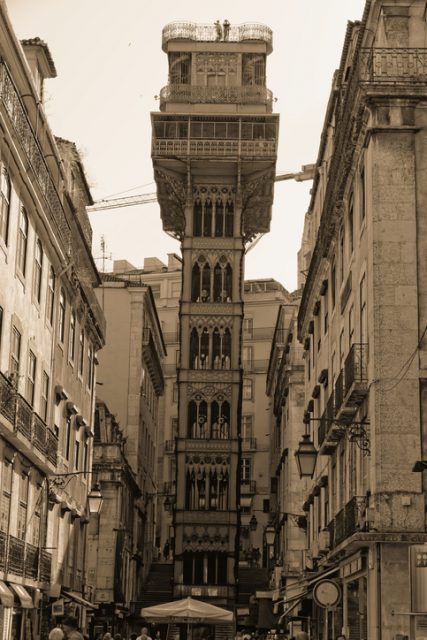
The construction of the Santa Justa was funded by the royal house, and on the opening day over 3,000 tickets were sold. By the end of the first year after its opening, over half a million passengers were estimated to have been in the lift, so its popularity flourished and kept on rising.
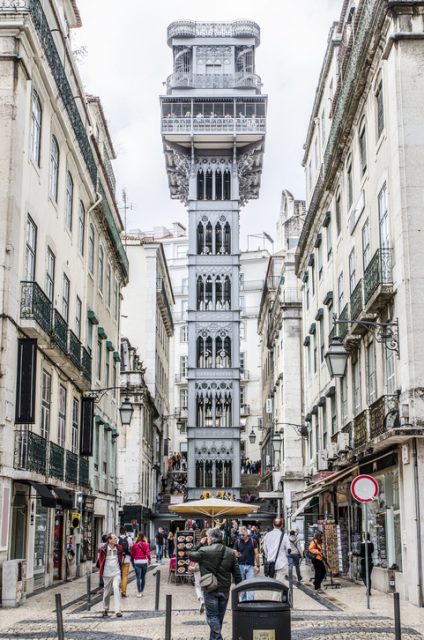
The elevator Santa Justa’s structure is embellished with appealing Neo-Gothic arches and geometrical patterns, while its inside includes two wooden carriages that transport passengers up the steep hill in the Baixa district to the ruins of the Carmo convent and church through the exit at the upper level. In the past, this lift was a very useful service, which eased the difficulty in climbing up the steep Carmo Hill. However, nowadays it’s one of the most valuable landmarks in Lisbon.
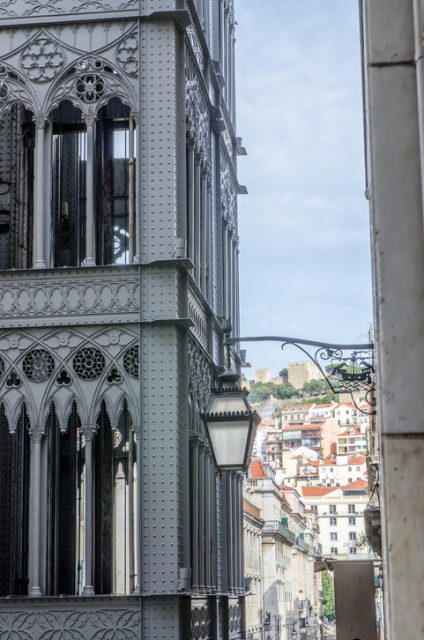
Elevador de Santa Justa was designed by the architect Raoul Mesnier de Ponsard, the former apprentice and civil engineer of the now celebrity architect Gustav Eiffel, the designer of the Eiffel Tower in Paris. When Ponsard finished his studies, he returned to his hometown and decided to put his knowledge into practice.
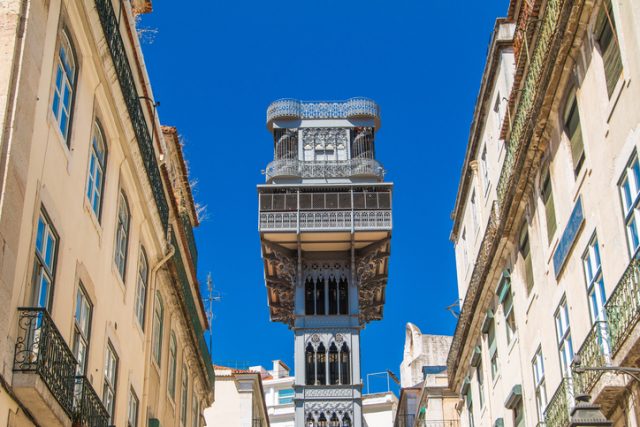
This fact explains the similarities concluded between the Elevador de Santa Justa and the Eiffel Tower and the epithet “the Eiffel Tower of Portugal.” The lift includes two cabins which can carry 25 people at once, both decorated with wood panels and brass fittings that take off every morning early at around 7 AM and finish work at 11 PM.
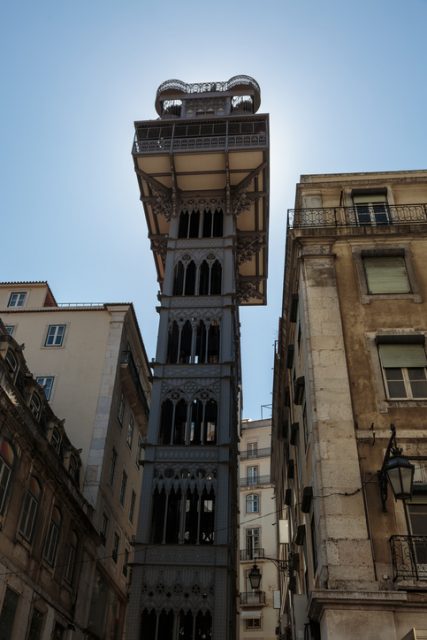
Initially, the elevator was powered by steam, but since 1907 it has been using electricity with a safer and cleaner motor which still powers the lift. When visitors reach the top, they step on the platform which can be reached by a spiral case, and relax with a coffee in the cafe while drifting away into the magnificent view of the Baixa neighborhood, the Rossio square or the castle on the opposite hill. At night, the Santa Justa belvedere becomes a real romantic oasis in the crowded urban Portuguese jungle.
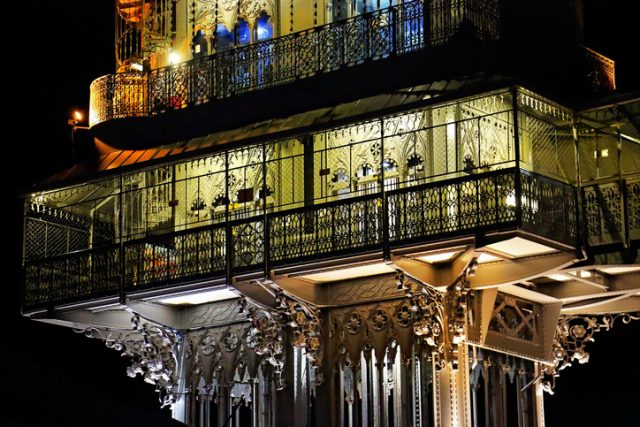
In 1973, the Elevador de Santa Justa came under public ownership and was taken over by the Carris Corporation, the executive manager of Lisbon’s tram network. This act has integrated the elevator in the public network of the city, thus, today, a ride on the lift can be obtained with the 24-hour public transport ticket purchased at any metro station. The Santa Justa is open seven days a week and works around 16 hours a day. In 2002, Elevador de Santa Justa, along with the Gloria, Bica, and Lavra cable railways, were all recognized as national monuments.
The authentic ambiance of Santa Justa continues even after its closing hours in the summer with street music bands that perform in front of the lift’s entrance, entertaining the late night audience who enthusiastically enjoys the colorful vibes and sensations of Lisbon.
